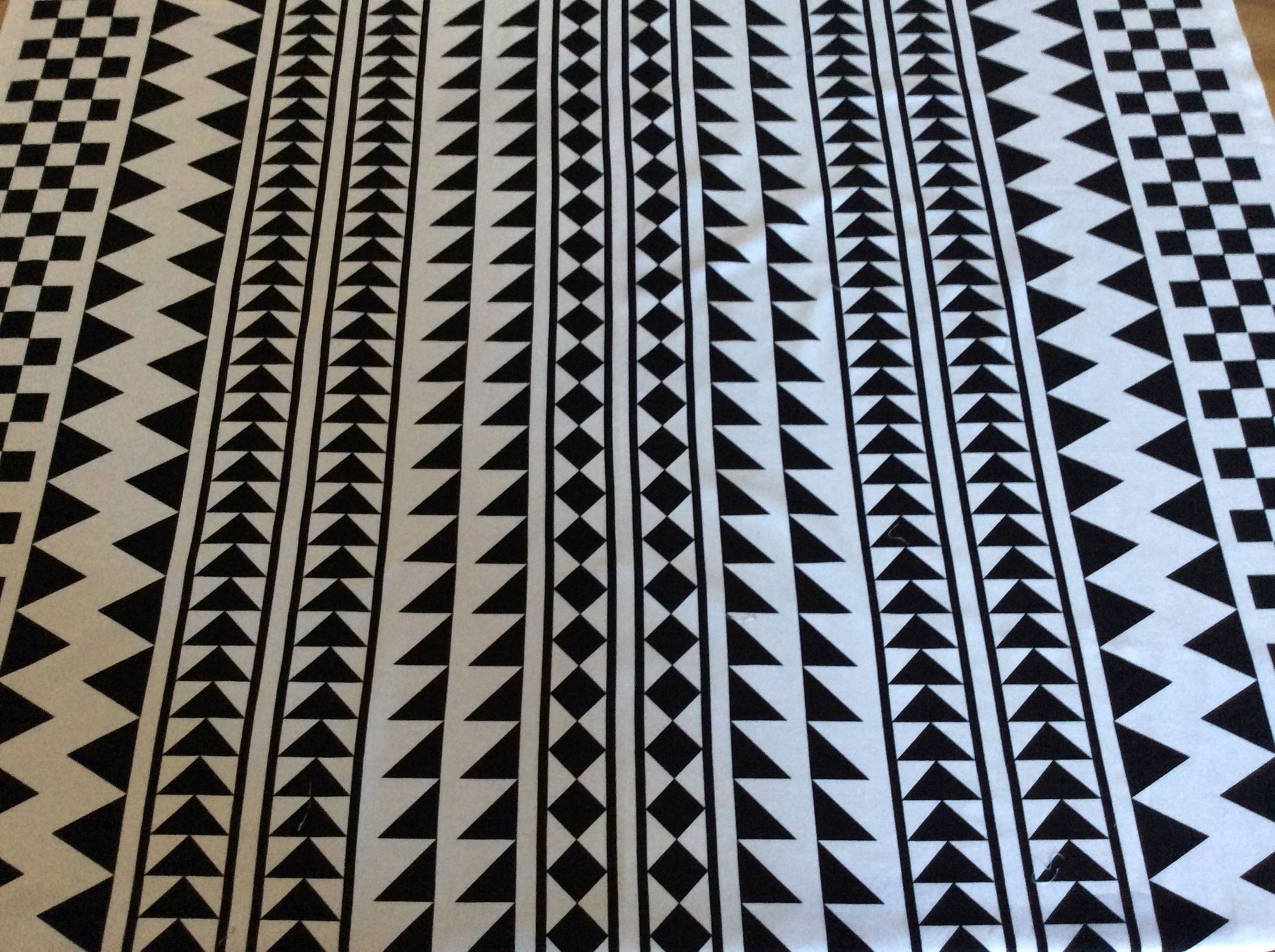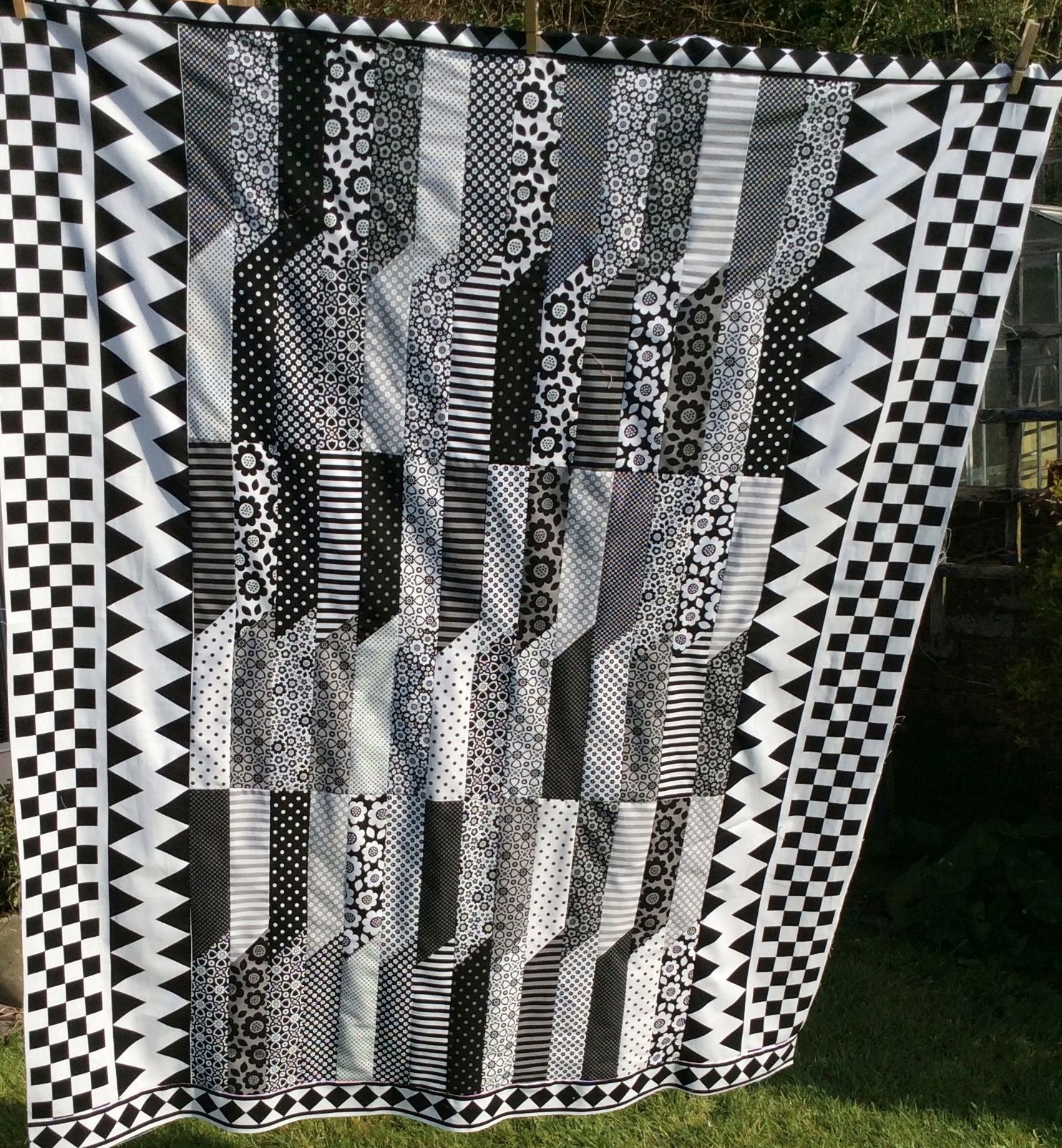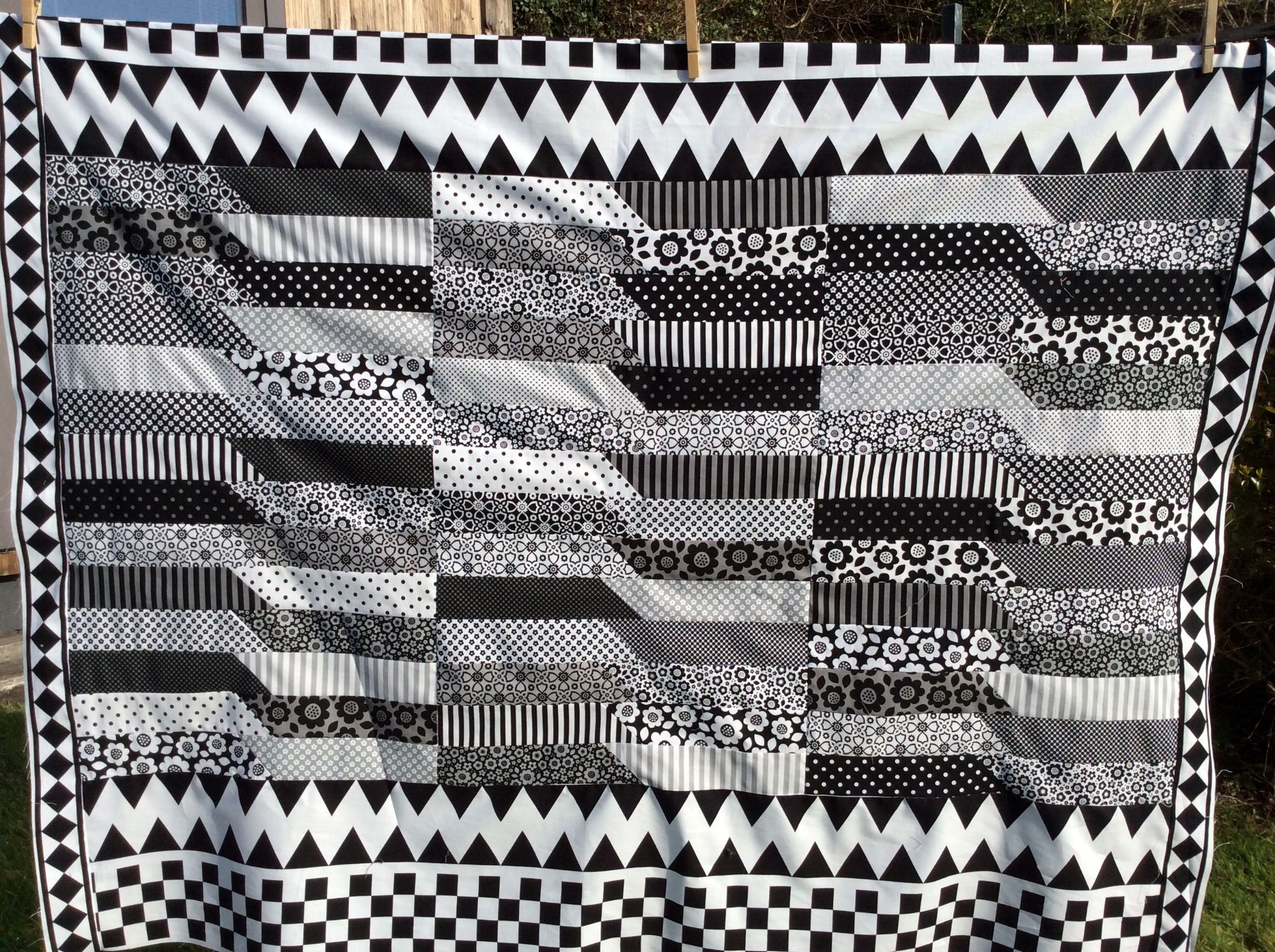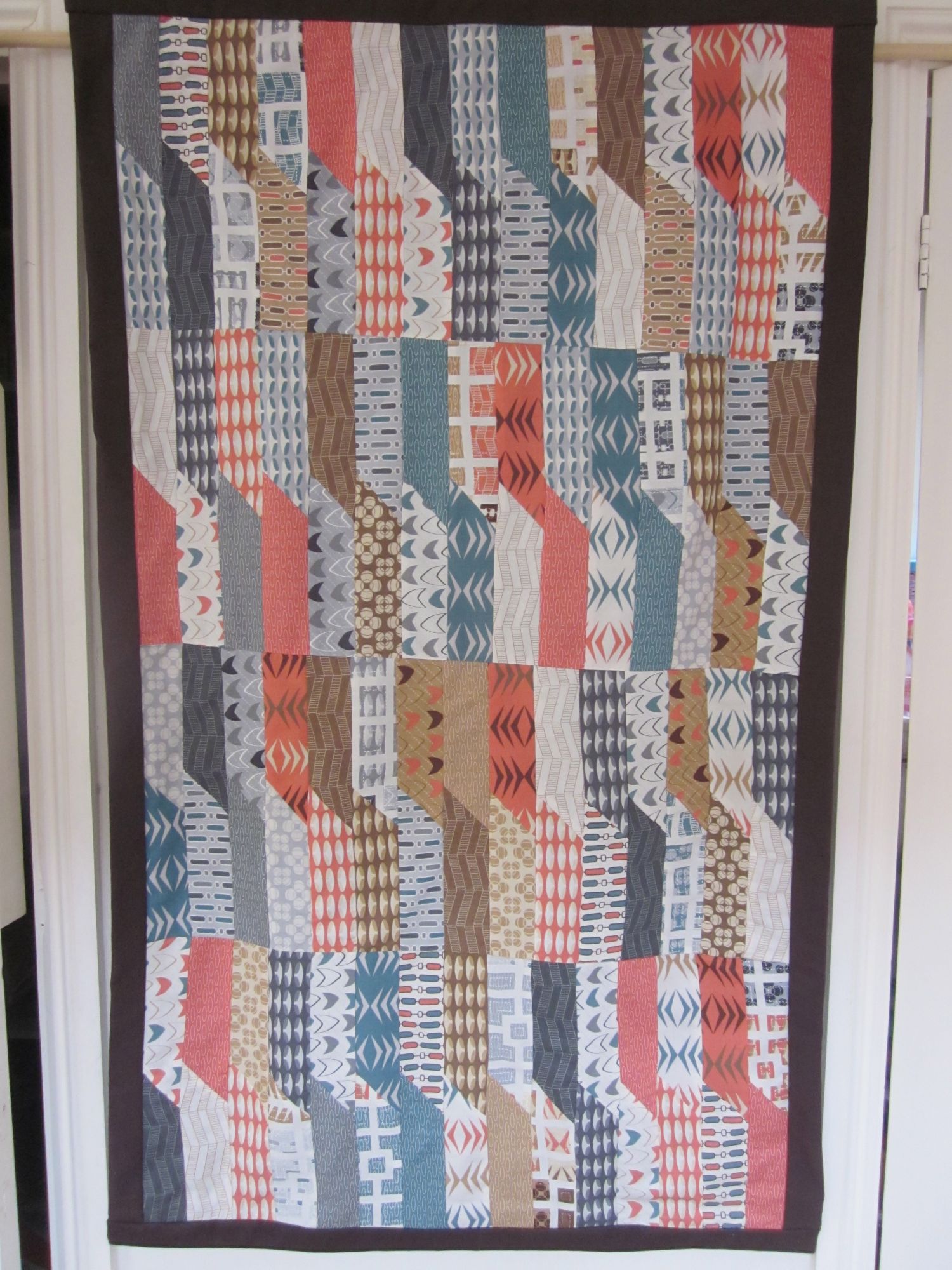Free Motion Quilting With 1/4" Ruler Foot and Templates on a Domestic Machine - From a Beginner's Perspective
Posted on
FREE MOTION QUILTNG WITH ¼” RULER FOOT AND TEMPLATES ON A DOMESTIC MACHINE – what you'll need to get started...
This first blog is just about the ‘kit’ you’ll need to get started and more blogs will follow with tips I’ve picked up, any issues I encounter etc. There are a lot of very helpful and informative blogs available already from people with years and years of experience of free motion quilting and so my blog will differ inasmuch as I am pretty much a beginner at this type of quilting myself.
Free Motion Quilting (‘FMQ’) on domestic machines using templates and rulers is already popular in America and I can see why – from the very little work I've done with templates, it really is fun and there’s every reason to think that the trend will catch on in Britain too.
Perversely, I’m doing things back to front starting with FMQ using templates and rulers, rather than getting used to FMQ first then adding the templates and rulers.
Some time before I ever thought of opening an online shop I was visiting a friend who had been to a FMQ workshop a few days beforehand and I saw some of the samples she had made during the workshop. As I had never given Free Motion Quilting any real thought, other than to admire other people’s handiwork, I had no idea what was entailed. At that stage I didn’t even know that you needed to have the feed dogs down. That’s how little I knew!
Inspired by my friend’s samples, I asked if I could try. I was unfamiliar with her machine but that's no excuse for what I produced! I tried visualisation at first thinking I was moving the fabric rhythmically in gentle swooping motions. That isn’t what actually happened though. The moment I sat at the machine, for some inexplicable reason, I tensed up with shoulders hunched and whenever I started sewing I seemed to have spasms and my hands would jerk this way and that. After my disappointing start with FMQ I decided that I needed to set aside some time to relax and practice. In the meantime I started to watch a lot of tutorials on You Tube and it was from these that I picked up tips, which helped me understand why my earlier attempts were not particularly successful. In fact, before I started using the templates and rulers, I had not used FMQ on any of my patchworks. I had stuck to straight line stitching using a walking foot attachment and, when I say ‘straight line’ stitching, on close inspection, one might see a wobble or two.
More recently I attended the Spring Quilt Festival at Exeter in Devon and saw someone demonstrating FMQ using rulers and templates and I recognised the enormous potential of using them to create fabulous patterns on patchworks. When I got home I carried out some research to find out what was needed and realised that to use templates and rulers effectively there are some accessories that are essential and some that are preferable to have but are not absolutely necessary. At the bottom is a list of the accessories I have bought which may help as a guideline.
The accessories you will need will depend on your machine. My machine is a Janome Atelier 5, which has a high shank. It’s important to know whether you have a low or high shank machine as this will determine the ¼” ruler foot attachment suitable for your machine. Care needs to be taken to make sure you buy the right attachment so that you don’t damage your machine. So whatever attachment you decide to get make sure that it’s the right one.
As my Janome machine came with a ‘Quilting Kit’ including, amongst other accessories, a Convertible Free Motion Quilting Foot Set (a Foot Holder and three interchangeable feet) I decided to buy the Janome attachment. It is the foot holder from the set that’s needed for the FMQ with templates and rulers and you will also need the ¼” Ruler Foot to attach to the Foot Holder, which I had to buy separately. The Janome ¼” ruler foot for my machine is called a Free Motion Frame Quilting Feet Set and includes two feet (a ¼” ruler foot and an open toe frame quilting foot). Below is an image of what the Janome ¼” ruler foot attachment looks like for my machine:
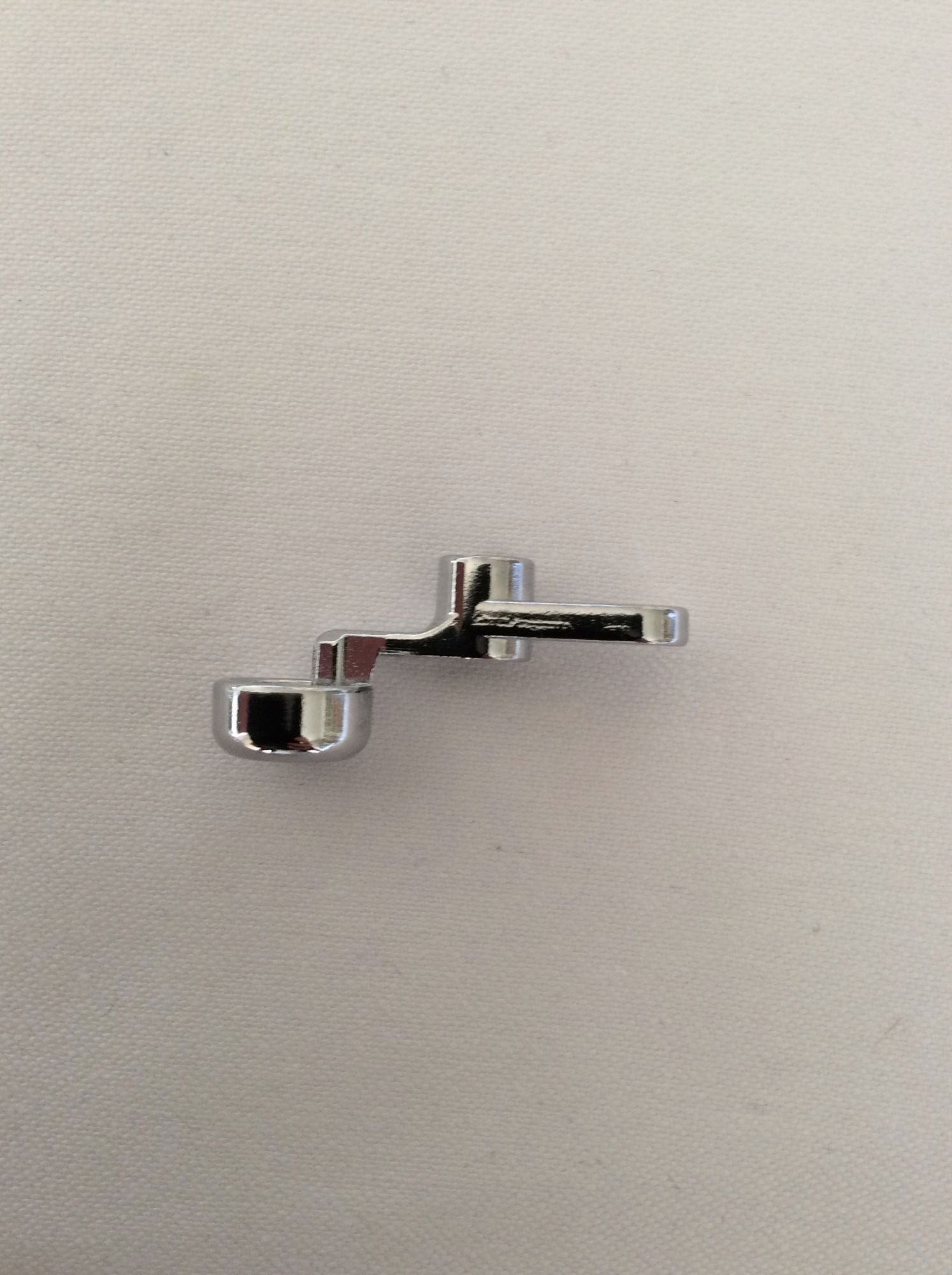
And this is what it looks like when it is attached to the Foot Holder:
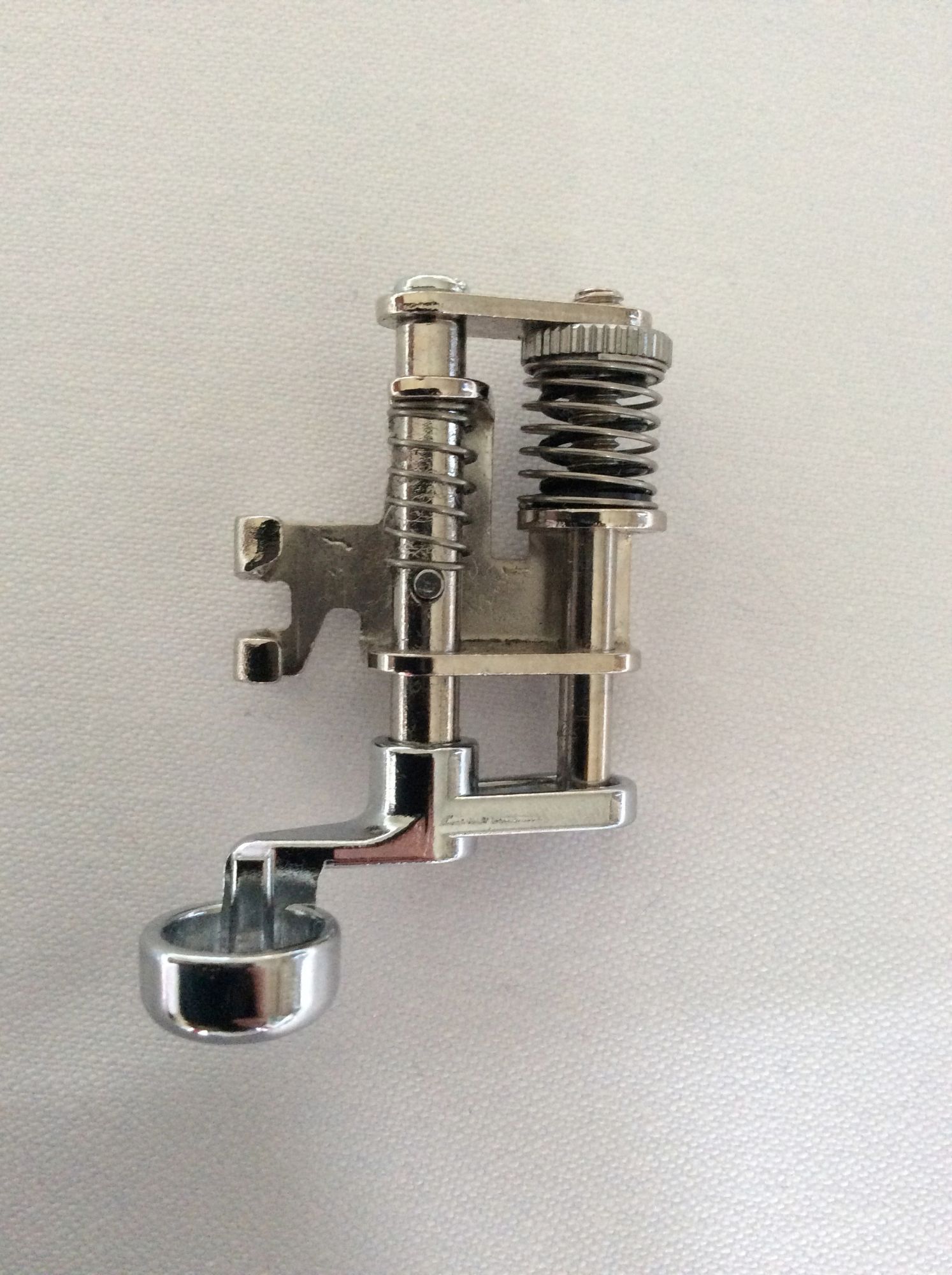
The ¼” ruler foot has a ½” diameter and a high heel at the back and is designed to accommodate the use of ¼” rulers and templates.
If you decide to buy a ¼" ruler foot from Westalee for example, you won't need the foot holder attachment.
My Janome Quilt Kit also included an Extra Wide Table. If you don’t have an extension table I would recommend getting one. Having the extra space allows you to handle large quilts more easily and the bigger the table the better. It is now possible to get large extension tables for the vast majority of domestic machines.
Although I prefer not to wear quilting gloves, I found that I had much better control when wearing them. Obviously getting a pair of gloves that fit well is an advantage. I need to get a smaller pair as my current gloves are a tiny bit too big and I managed to sew the tip of the glove to my quilt! Thankfully, I managed to extricate my glove with some deft snipping without damaging the quilt or machine and with no obvious damage to the gloves. It was rather comical.
I also discovered that a sew slip mat is a ‘must’ as you need to avoid having any ridges or ruts where the machine throat meets with the extension table. You are aiming to have a smooth surface so that the ruler or templates don’t get caught on any uneven surface.
The next purchase is a template or template set. For the Folklore Windswept quilt pictured below I used one of the Westalee Circles on Quilts templates (this kit comes with four templates in different sizes plus adhesive strips which you add to your template to provide extra stability). There are a lot of templates on the market, particularly abroad. Having looked at a number of different makes I decided to go with the Westalee templates, an Australian brand. There are a lot of You Tube tutorials by Leonie West of Westalee and I would highly recommend these. They are easy to follow and the methods are explained very clearly. I understand there are over 200 Westalee templates suitable for use on domestic machines. The options for creating superb designs are endless. The range of Westalee templates available in England is currently limited but I understand Cotton Patch will be stocking the entire range in just a matter of weeks.
There are other brands of rulers and templates on the market but I haven’t tried any of these.
Below is an image of one of the Westalee circles template I used and an image of the Folklore Windswept baby quilt I made using the template. In my next blog I will describe my experience of using the Circles on Quilts templates.
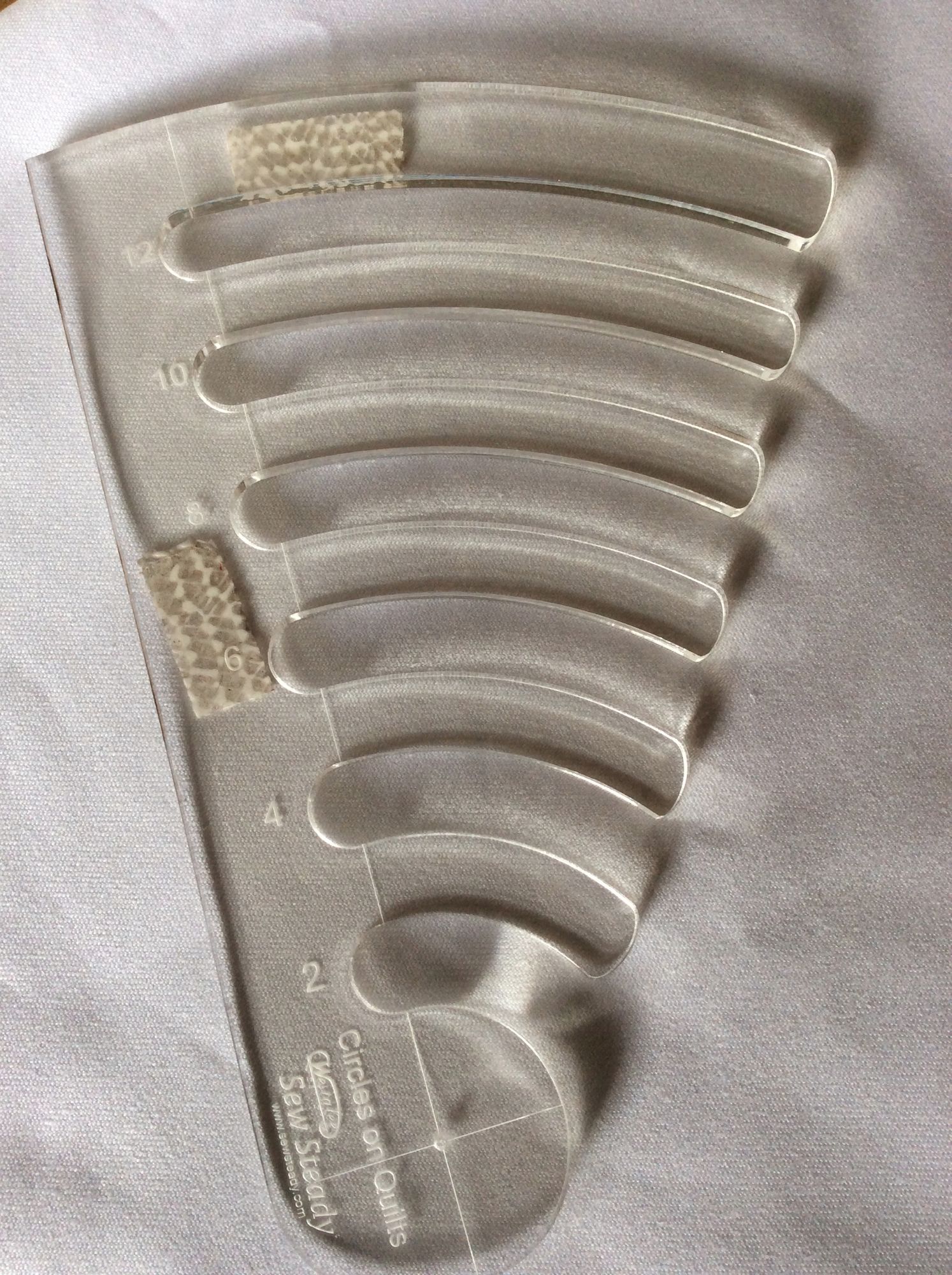
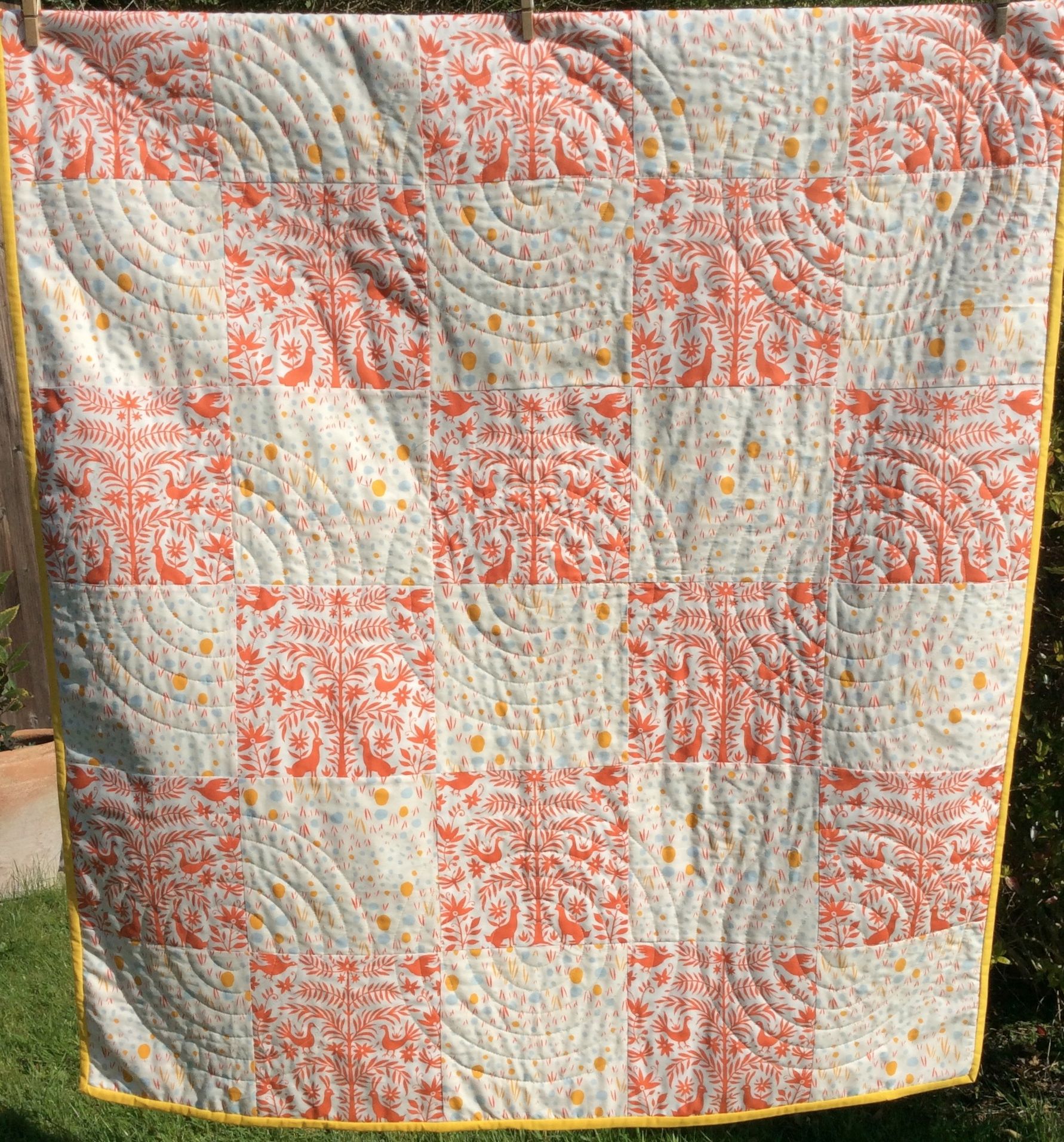
When I thought I was fully kitted out I discovered that the tension on the bobbin needs to be adjusted when doing FMQ. Now I know this, it explains why my early attempts were ‘okay’ but not brilliant. With the alteration on the bobbin tension the difference to the quality of the stitching is really noticeable. Adjusting the bobbin tension can be done manually. However, I didn’t want to run the risk of not being able to reset the bobbin tension when reverting to straightforward sewing. Therefore, I decided to splash out and buy a bobbin holder specifically for FMQ (I didn't even know such a thing existed until recently). I feel as though I’ve been ‘splashing out’ a lot lately. The acquisition of the special bobbin holder is worth considering if you are planning to do a lot of FMQ. On my Janome Atelier 5 the ordinary bobbin holder has a red dot and the FMQ bobbin holder has a blue dot to help you identify which is which.
My list of accessories for FMQ with rulers and templates on a Janome Atelier 5:
Necessary Accessories
- Slip mat
- ¼” Ruler Foot Attachment (high shank)
- Extension Table
- Rulers and Templates
Optional Accessories
- Convertible Free Motion Foot Holder (high shank). This is optional as you won't need this if you opt for a ¼" ruler foot that has been designed to be attached without a foot holder. As I already had the Janome Quilting Kit with the foot holder attachment I chose to buy the Janome ¼" foot attachment.
- Gloves
- Bobbin Holder for Free Motion Quilting
Visit my website again in three to four weeks for the next instalment on FMQ using templates and rulers including the template I used on the Folklore baby quilt.
I hope you've found this blog helpful.

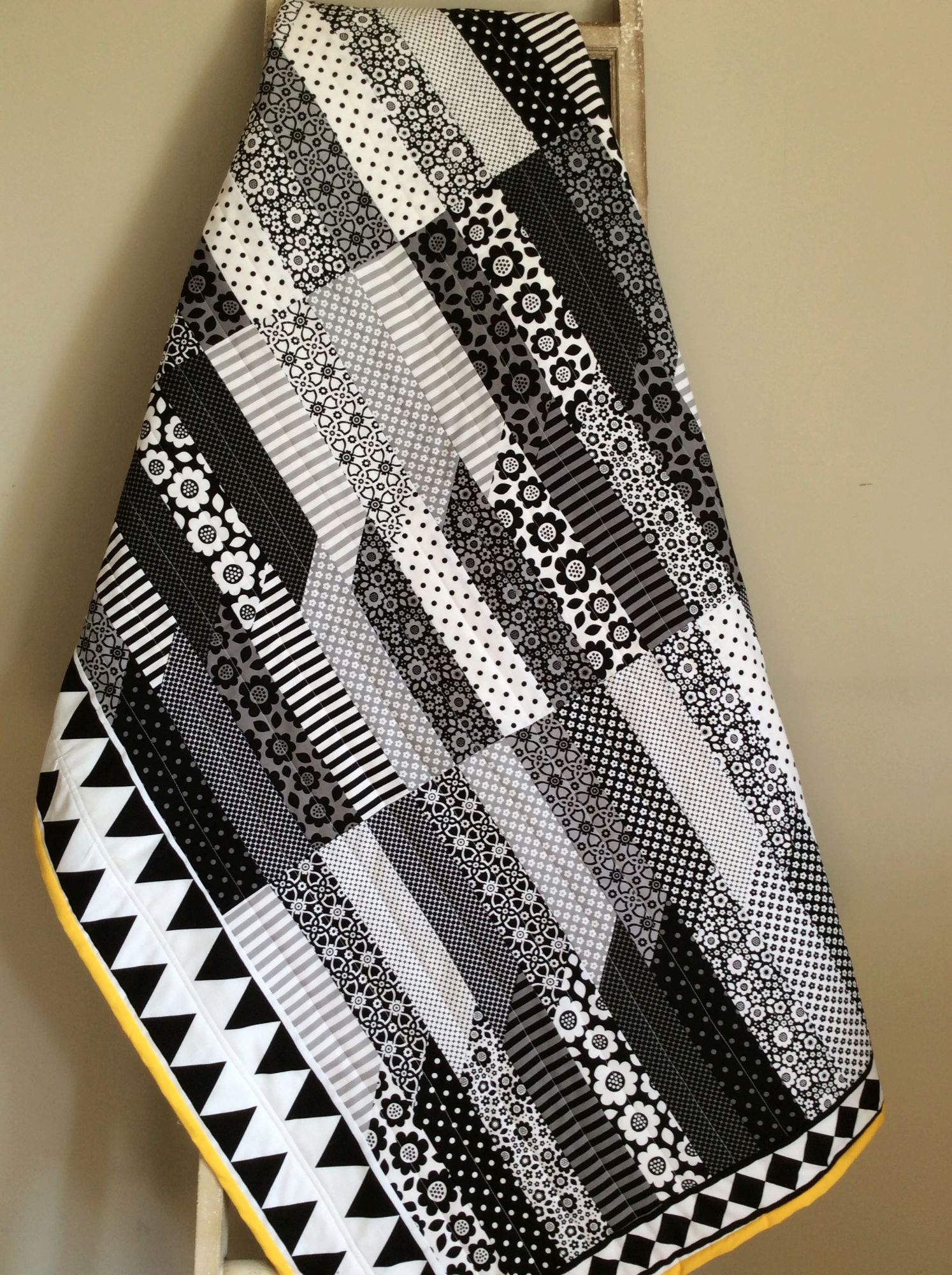
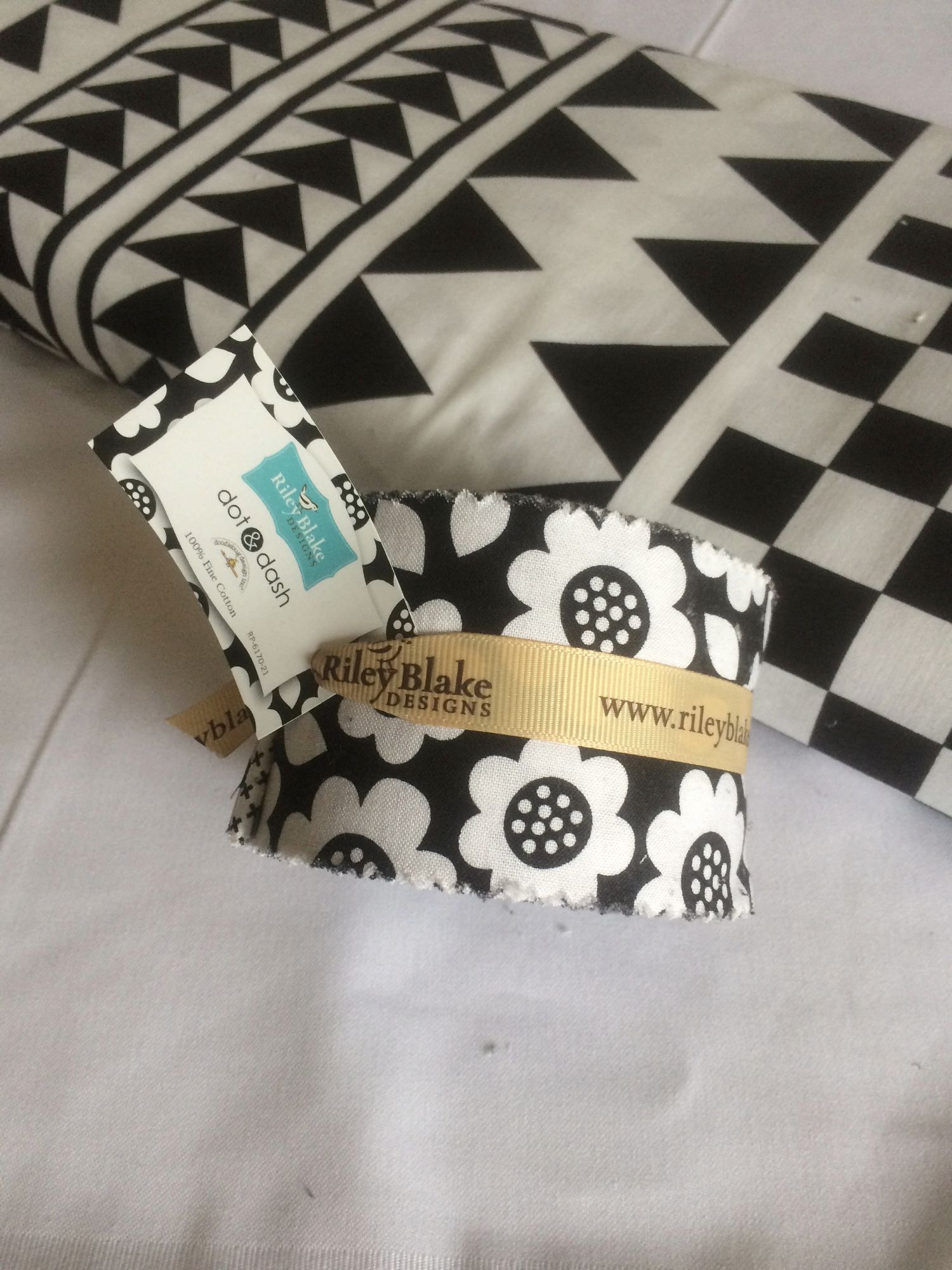
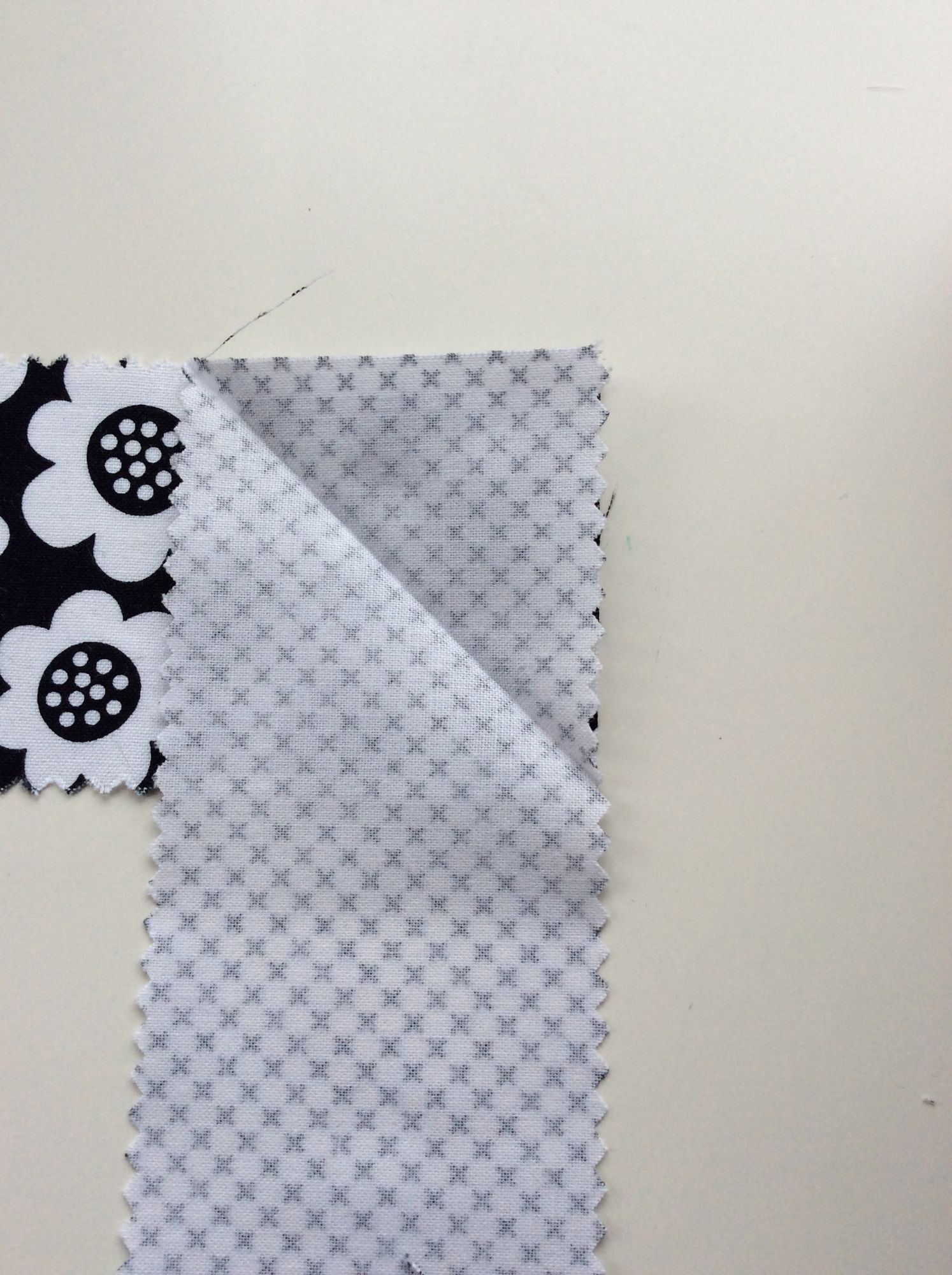
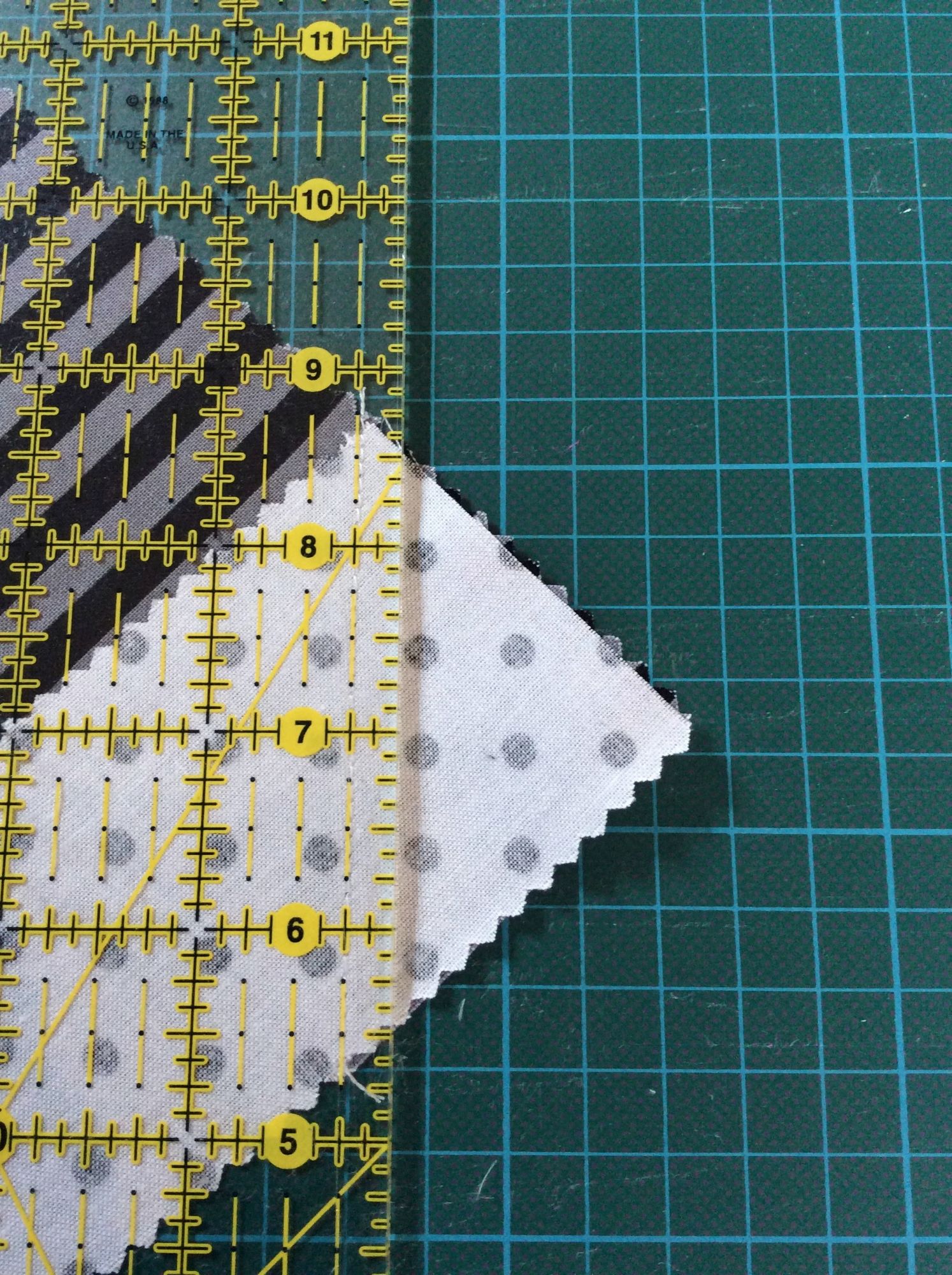
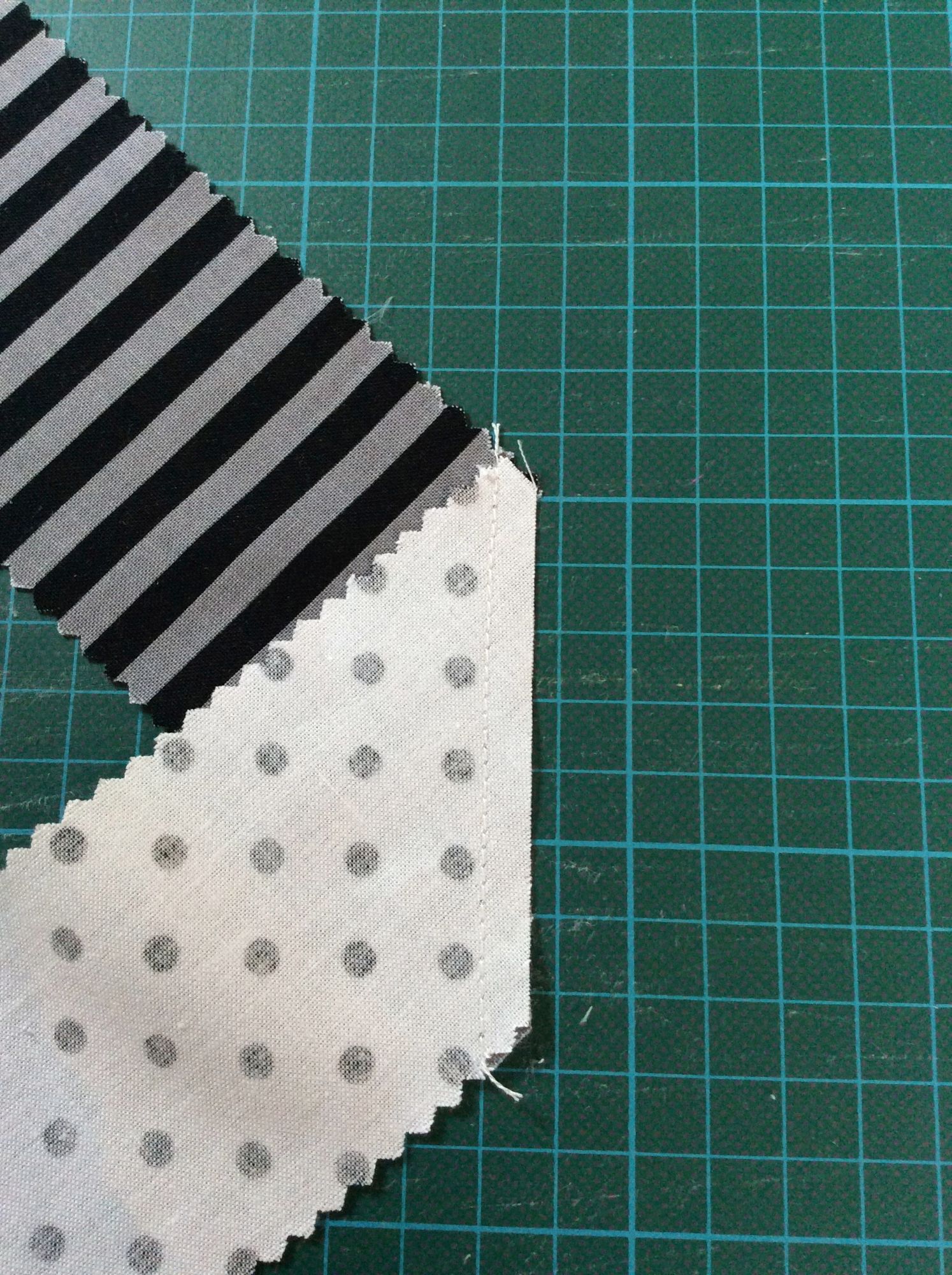 Set and press the seams.
Set and press the seams.